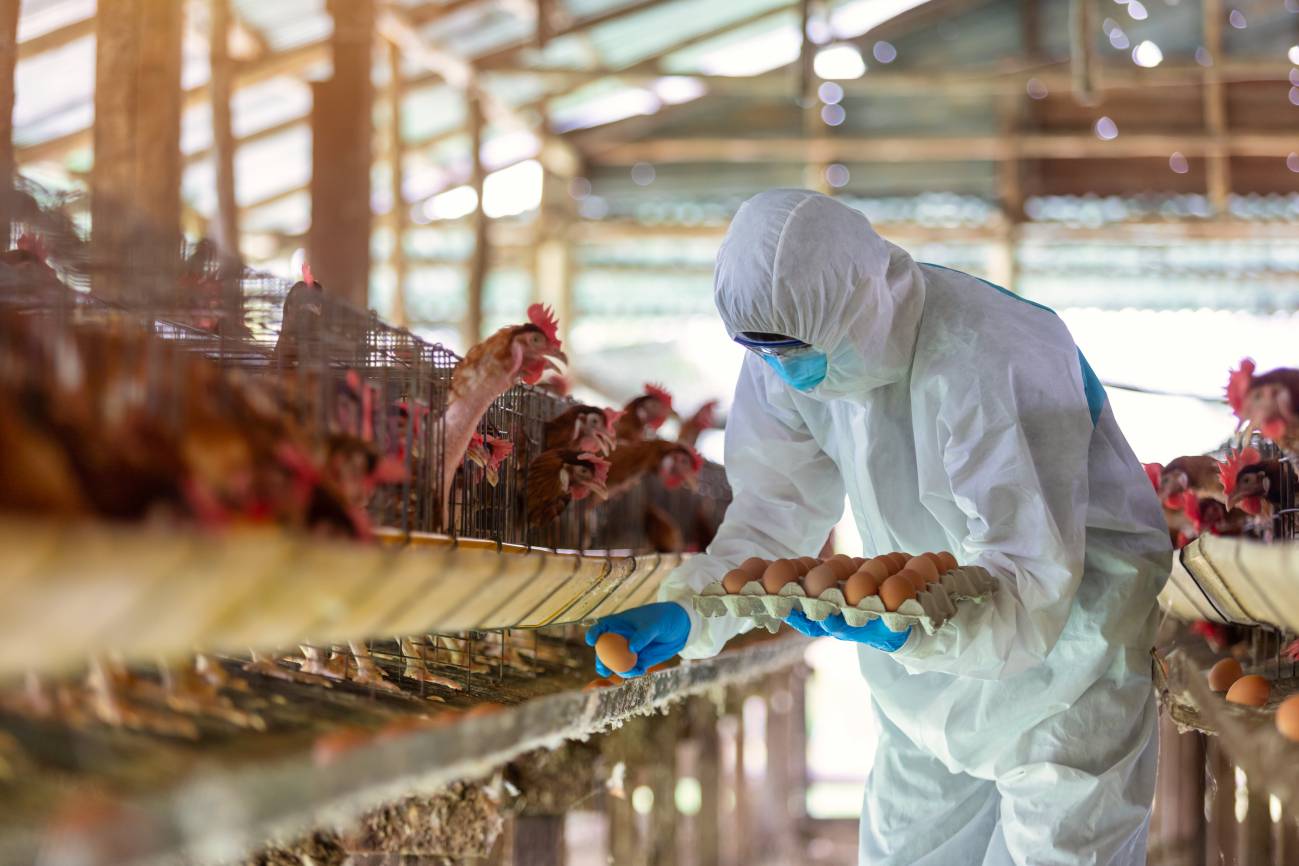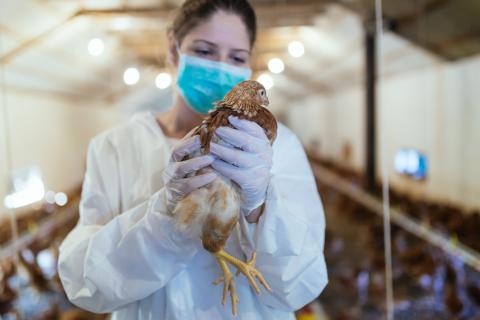Reactions to the discovery of the first human case of H5N1 flu in Spain
On 27 September, the National Microbiology Centre detected a positive H5N1 avian influenza in a worker at a poultry farm in Guadalajara (Castilla-La Mancha). The sample was taken on the 23rd and the affected person remained asymptomatic until he tested negative, according to Animal's Health.

Chicken farm. / Adobe Stock.
Aitor nogales - h5n1
Aitor Nogales González
Virologist (senior scientist) at the Animal Health Research Centre (CISA, INIA-CSIC)
Avian influenza, better known as bird flu, is a highly contagious viral disease affecting both wild and domestic birds, and is one of the most important diseases in the poultry industry. The natural hosts of avian influenza are wild birds, especially waterfowl. Avian influenza is classified into two categories depending on the severity of the disease in domestic birds: low pathogenic and highly pathogenic avian influenza (LPAI and HPAI, respectively). HPAI is included in the list of notifiable diseases of the World Organisation for Animal Health (OIE) and causes high mortality rates in domestic birds or vulnerable wild species.
Although HPAI are viruses that primarily affect birds, they sometimes cross the species barrier and infect other mammalian species, including humans. Avian influenza viruses have been key in the different influenza pandemics and represent an important zoonotic risk. Specifically, the HPAI H5N1 subtype was first detected in birds in 1996 in Guangdong (China) and the first human case was identified in 1997. Since then, the HPAI H5N1 subtype has had a major impact on the poultry industry and around 900 human cases have been detected with a mortality of 50-60%. Until now, no human case of HPAI H5N1 has ever been detected in Spain and new infections cannot be ruled out. Human infections with HPAI H5N1 are due to close contact with infected birds and the risk to the general population is considered low, as no sustained inter-human transmission has been detected.
However, the unprecedented number of outbreaks of avian influenza in the 2021-2022 season in Europe and worldwide, obliges us to keep a close eye on how the situation is evolving and to continue active surveillance to mitigate the impact of the virus on the poultry industry and to be able to anticipate future pandemics. We must remember that the next influenza pandemic is not likely, it is almost certain. So it is not a question of whether it will happen or not. The question is when it will happen and how it will originate.
Gustavo del Real - gripe aviar
Gustavo del Real
Científico titular en departamento de Biotecnología del INIA-CSIC
En las dos décadas transcurridas desde que se comunicó en 2003 el primer caso mortal humano de gripe aviar –de un veterinario que atendía una granja de pollos en Países Bajos –, se han registrado más de 1300 nuevos casos confirmados de infección con alguna de las cepas de gripe aviar de alta virulencia, fundamentalmente de los subtipos H5, H7 y H9. La incidencia global no se puede considerar alta, teniendo en cuenta que en muchos países asiáticos la infección por estas cepas hipervirulentas es frecuente en las aves de corral. Lo que más destaca de esta zoonosis es la alta tasa de mortalidad, que alcanza al 34% de las personas infectadas.
La transmisión del virus aviar a los humanos requiere un contacto estrecho, por lo que suele darse en el personal encargado del cuidado de las granjas afectadas y, especialmente, en aquellas explotaciones en las que no se aplican las medidas básicas de bioseguridad y protección.
La epizootia de gripe aviar de alta virulencia que estamos padeciendo desde 2021 está siendo la peor de la historia en Europa, con 2.400 brotes en aves de corral y varios miles de aves silvestres identificadas con H5N1 en 36 países europeos. Los últimos datos ofrecidos por el Ministerio de Agricultura contabilizan 36 brotes en granjas avícolas y 82 focos en aves silvestres durante 2022 en España. La granja en la que se ha producido la infección de un empleado había sido recientemente afectada masivamente por la cepa H5N1 de alta patogenicidad.
Hay que resaltar que los virus de la gripe aviar también pueden transmitirse a otros animales. Se han reportado infecciones con cepas aviares de H5N1 a diversas especies carnívoras silvestres y domésticas y a otras especies ganaderas como el cerdo. La infección en estas especies es especialmente peligrosa porque podría favorecerse la creación de nuevas cepas híbridas entre los virus aviares y los propios de esa especie, que muestren mayor virulencia o mayor capacidad para transmitirse a la especie humana.
En definitiva, es imprescindible llevar a cabo planes sistemáticos de control de los focos con estas cepas hipervirulentas de gripe aviar en las distintas especies domésticas y silvestres potencialmente susceptibles, para evitar la emergencia de nuevos virus epidémicos o pandémicos de gripe.



